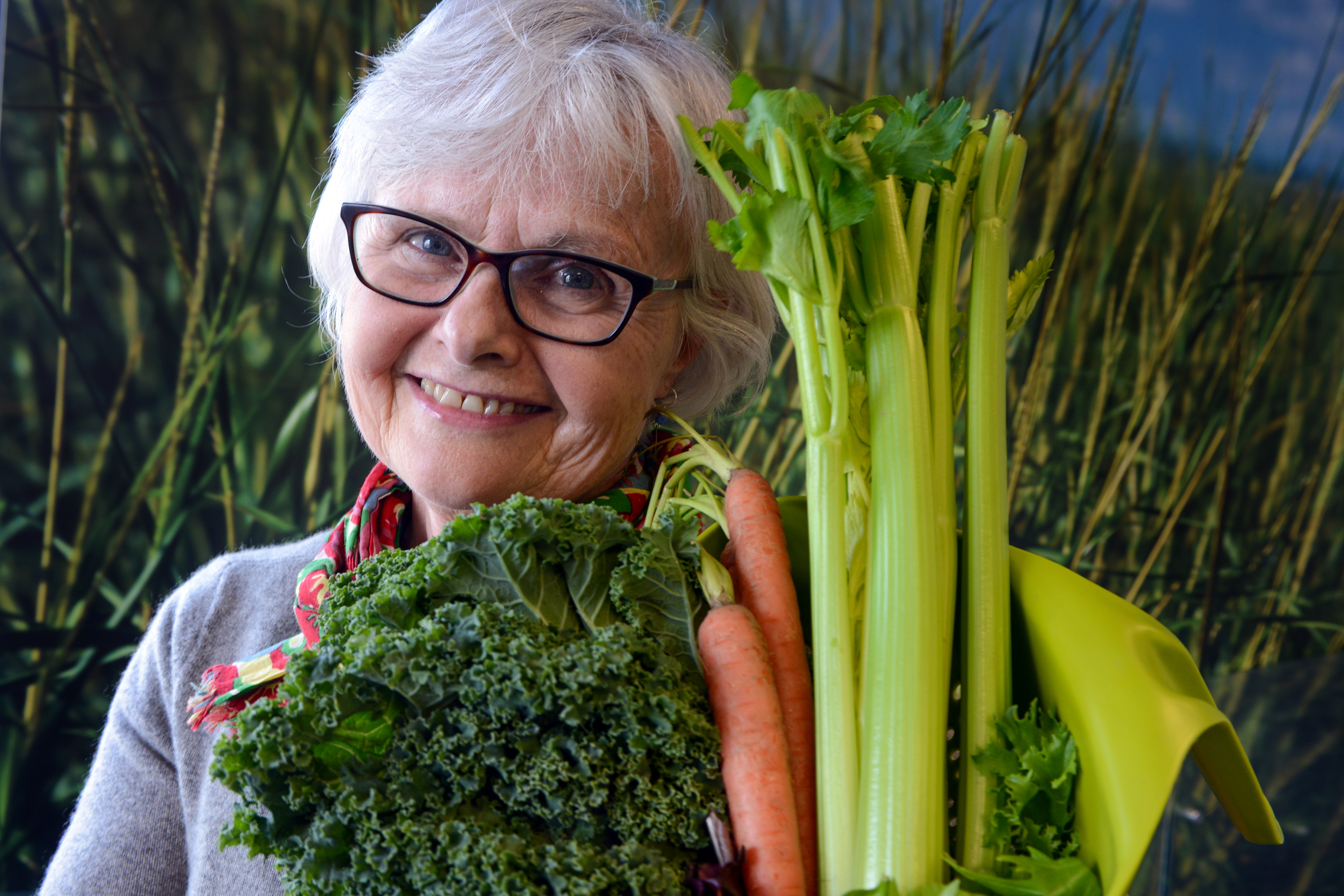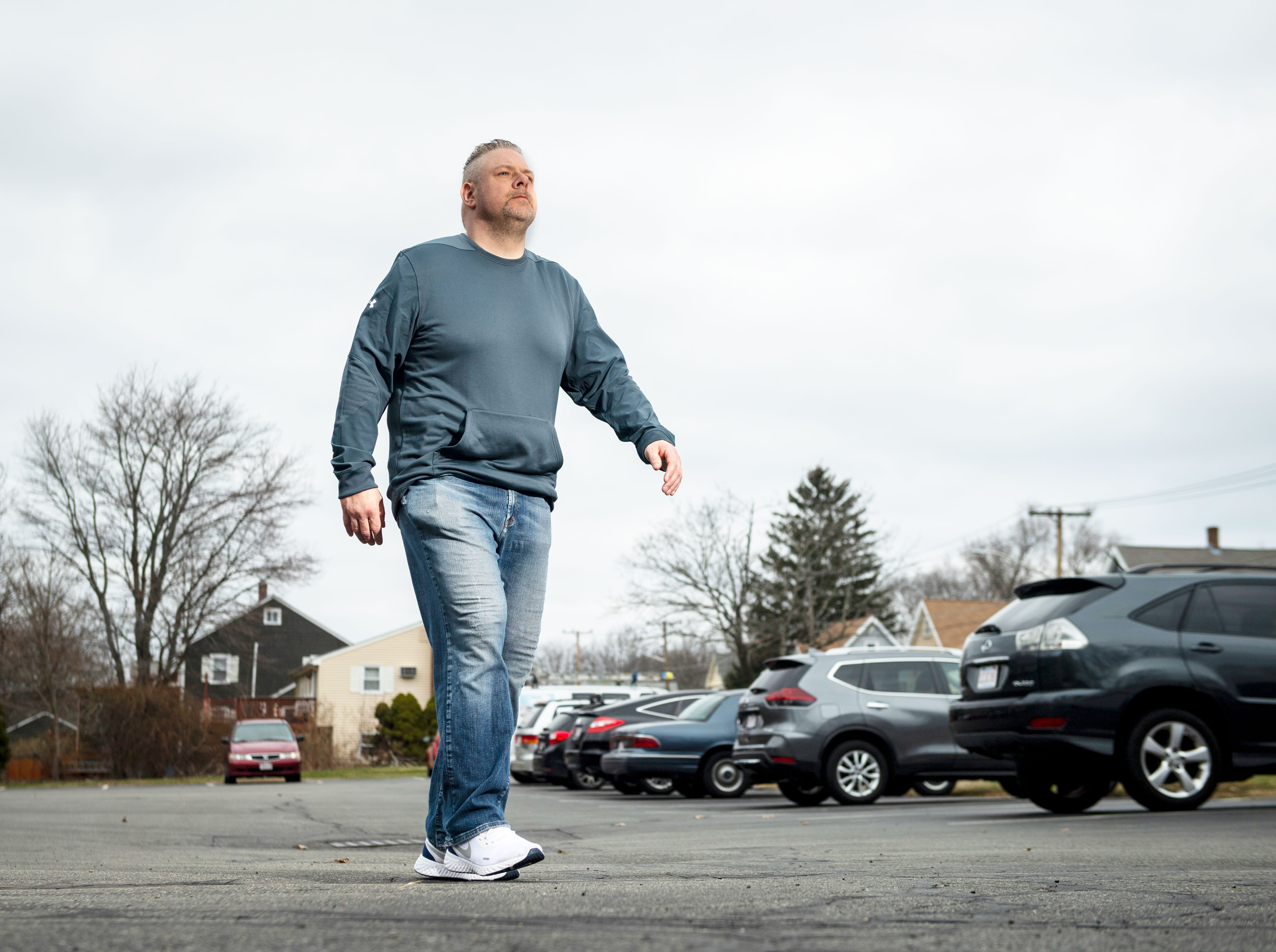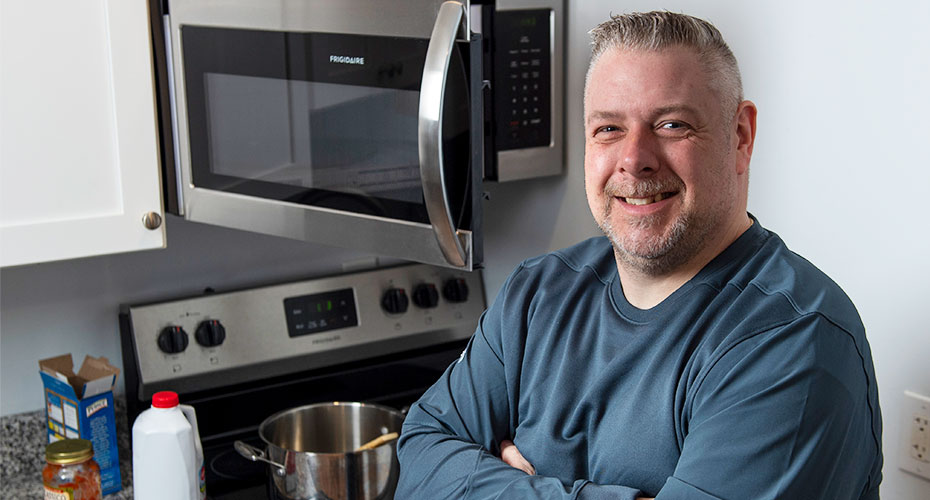Nov 16, 2023
Meals that heal
Brian McDonnell thinks someone was looking out for him that day.
On the Saturday after Thanksgiving last year, the 43-year-old father of two was making good on his offer to clean the gutters at his buddy’s house. There had been a dusting of snow the day before, and after McDonnell climbed onto the roof, he slipped on a patch of ice and fell 20 feet to the ground below.
He was taken to a local ER, where doctors ran scans and took X-rays. They told him he had broken his back in six places but astoundingly wouldn’t need surgery and could expect a full recovery in nine months to a year.
“I was very lucky,” McDonnell says.
After he got discharged from the hospital, his wife setup a Meal Train on Facebook, and soon enough family and friends were bringing over casseroles and meals that McDonnell tucked into for breakfast, lunch and dinner. Within the first week, he noticed his face getting chubbier, and his weight clicked up six pounds.
“I was binging food and the TV show ‘Ozark,’ ” McDonnell recalls. “I thought, ‘I’m going to be 700 pounds by the time this is done.’ ”
He mentioned his concerns about his weight to Jasmine Carter, a nurse case manager from his health plan, Blue Cross Blue Shield of Massachusetts, who called to check in on him after he got out of the hospital. She asked him if he might like to speak with a dietitian, and he agreed.
Within a few days, he got a call from Blue Cross Blue Shield of Massachusetts dietitian Nancy Dowling, who offered him simple steps to change his diet and aid his recovery.
Simple steps
Dowling encouraged McDonnell to cut out soda and cut down on sugar and saturated fat. She advised him to eat smaller meals throughout the day—including breakfast—instead of a massive dinner at night, and she recommended a high-protein diet full of lean meat and nuts. She also encouraged him to keep moving.

“Maintaining a healthy weight through physical activity and eating healthy foods that are high in a lot of different nutrients definitely can affect recovery,” Dowling says, noting specifically that “protein is critical because it’s a healing nutrient.” She added that “the belly and the back go hand in hand. If you have less belly fat, that takes pressure off your back.”
McDonnell followed Dowling’s advice to the letter: “I did what Nancy told me to do. I don’t have any chips and dips or cheese and pepperoni. When I binge-watch ‘Ozark’ now, I have 30 cashews and drink water instead of soda.”
And he’s tried to stay active without aggravating his back by doing light housework and strength-based exercises such as push-ups and dips against his bathroom sink.

How nutrition can help with the healing process
Extra protein and nutrients can help your body build and maintain new tissues to heal from a wound such as a broken bone.
For example, as Dowling shared with McDonnell, lean meat, beans and nuts are high in protein, iron and zinc, all important to the healing process.
Dark leafy greens, nuts, and dry beans are also great sources of iron, as well as magnesium and potassium.
Salmon, swordfish, tuna and dairy foods are high in Vitamin D, which increases the amount of calcium your blood can absorb.
Foods such as sweet potatoes, spinach and carrots are high in Vitamin A, which promotes cell growth and development, bone development and immune system functioning.
Red peppers, oranges, grapefruit, kiwis, broccoli and strawberries are high in Vitamin C, which helps your body form collagen, a protein needed for strength and flexibility that repairs tendons and ligaments and strengthens bones.
Staying well hydrated with lots of water is also crucial while healing.
On the mend
After a month, McDonnell had lost weight and gotten a glowing report from his doctor, who was pleased with how his back was healing. “My doctors say they can’t believe how much I’m doing and how well I’m doing,” he says.
“I hadn’t seen that number on a scale in a very long time,” McDonnell says of his weight loss. “I feel dynamite.”

Losing the weight not only has helped him physically but mentally. “If I had put on weight after my accident, I’d be going bananas. I knew I didn’t want to get into a funk.”
McDonnell says his daughters, ages 8 and 4, are the reason he has gotten this far. “They keep me going.”
And he credits Dowling with helping him on his journey: “Nancy helped me so much. She was right there for me, and she’s definitely been instrumental in my recovery. I mentioned I was worried about my weight, and the next thing you know, I had this angel calling me. I think God puts people in people’s lives if they’re willing to take the help.”
But McDonnell is the one who did the hard work, day in and day out, Dowling said.
“He took my advice and ran with it,” she said. “I think his positive attitude got him to the place he’s at.”
A union roofer and former college hockey player, McDonnell is looking forward to getting back to work and back to the rink this fall.
Although he still has a long road ahead of him, he feels good about where he’s at, and he’s looking to build on the progress he’s made: “I want to continue using this experience as a silver lining to get healthier.”
Did you find this article informative?
All Coverage content can be reprinted for free.
Read more here.
PHOTO OF BRIAN McDONNELL BY CHRISTOPHER EVANS
PHOTO OF NANCY DOWLING BY JIM MAHONEY

